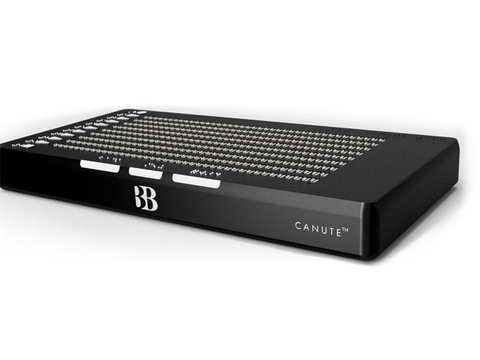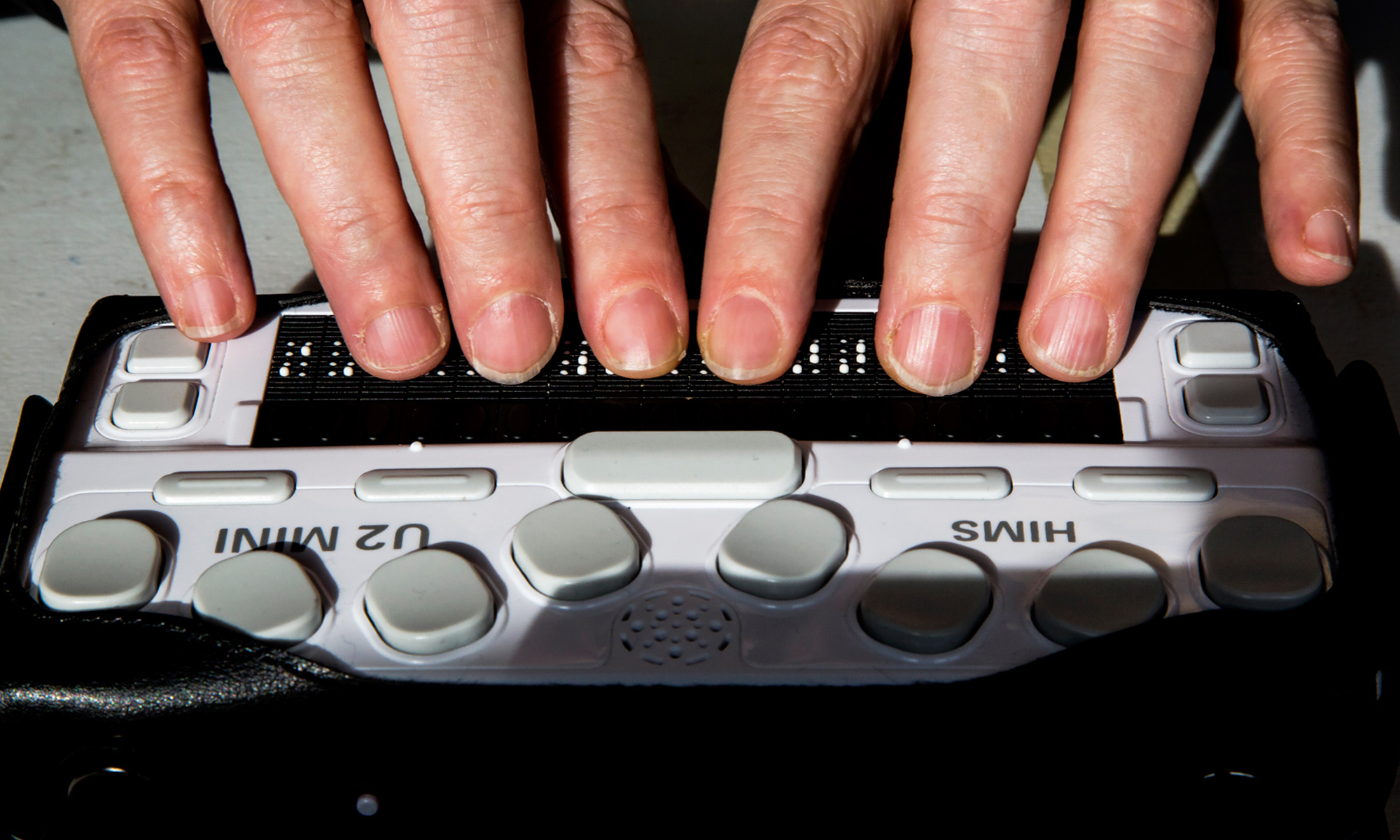Discover Cutting-edge Devices Created for the Aesthetically Impaired
The growth of cutting-edge devices for the aesthetically impaired stands for a significant innovation in access and independence. Technologies such as clever glasses with AI abilities and mobile applications developed to give acoustic summaries are improving daily experiences for customers. In addition, wearable gadgets that employ haptic responses improve environmental awareness, while contemporary Braille developments offer new ways to involve with message. As these devices continue to advance, their influence on the lives of those with visual problems elevates crucial questions concerning the future of inclusivity and autonomy in various aspects of life. What exists in advance in this technological landscape?
Smart Glasses for Navigating

Smart glasses developed for navigation are transforming the method aesthetically impaired people interact with their environment. These advanced devices use a combination of camera technology, synthetic intelligence, and acoustic responses to give real-time info concerning surroundings. By employing challenge detection systems, clever glasses can inform users to prospective risks, allowing more secure flexibility in both unfamiliar and acquainted setups.
The combination of GPS innovation additionally enhances navigating capacities, enabling users to get auditory directions as they move. This hands-free strategy not just promotes self-reliance however also equips visually damaged people to navigate urban landscapes with enhanced confidence. Additionally, many clever glasses are furnished with features that identify spots and street indications, offering contextual details that enhances the individual experience.
Moreover, the development of these gadgets is consistently advancing, with companies functioning to improve the precision of things recognition and increase the variety of navigational features. As clever glasses come to be much more economical and available, they hold the possible to significantly transform life for visually damaged users. Eventually, these innovative devices stand for a vital step toward inclusivity, offering enhanced movement and a better sense of freedom for people navigating the globe around them.

Mobile Apps for Daily Living
How can mobile applications enhance the daily lives of visually damaged people? Mobile applications are reinventing the method visually impaired users browse their settings, handle everyday tasks, and access details. These applications offer important support via different functionalities, fostering self-reliance and improving lifestyle.
Numerous cutting-edge mobile applications are developed specifically for everyday living. Apps like Be My Eyes link visually impaired individuals with sighted volunteers through video telephone calls, enabling them to obtain real-time support with tasks such as reading labels or browsing unknown spaces. Seeing AI, established by Microsoft, uses artificial intelligence to describe surroundings, reviewed text, and recognize items, efficiently changing a smartphone right into an effective tool for daily help.
Furthermore, navigation apps customized for the visually impaired, such as Aira and BlindSquare, offer audio-based instructions and environmental information, allowing customers to traverse their surroundings safely and confidently. Past navigation and immediate support, mobile applications additionally support organization and job management, with attributes that help individuals establish suggestions, create order of business, and track visits. In recap, mobile applications function as important sources, encouraging visually damaged individuals to lead even more independent and fulfilling lives.
Wearable Technologies for Aid
Empowerment through innovation is significantly evident in the realm of wearable tools developed to aid aesthetically damaged people. These innovative tools incorporate flawlessly right into day-to-day life, improving navigating and giving essential feedback to users. Smart glasses equipped with cameras can recognize faces and read text aloud, enabling individuals to engage even more confidently in specialist and social setups.
An additional remarkable innovation is making use of haptic responses systems in wearable gadgets. These systems use vibrations or various other responsive signals to convey information concerning the individual's environment, such as challenges or modifications in terrain, enhancing mobility and safety and security. Wearable modern technologies likewise consist of wristbands that attach to mobile phones, alerting customers to notices via refined vibrations, hence enhancing page connectivity without dependence on aesthetic cues.
As these modern technologies remain to advance, they are not only improving independence for aesthetically damaged individuals yet likewise cultivating a higher sense of incorporation in culture. By connecting the void between obstacles dealt with in day-to-day living and the potential for eyeglasses freedom, wearable innovations serve as essential devices in the mission for equal rights and empowerment for those with visual problems.
Sound Description Tools
Sound summary devices play an essential role in boosting availability for aesthetically impaired people, providing them with the capability to engage with aesthetic media. AI-powered visual aids. These devices offer narrated descriptions of crucial aesthetic elements in movies, television programs, and live performances, guaranteeing that individuals can totally comprehend the context and emotions conveyed with visuals
Sound description can be integrated right into numerous platforms, including streaming services, movie theater screenings, and live movie theater. Several preferred streaming solutions currently include audio description as an access function, permitting audiences to pick it easily. In enhancement to mainstream media, specialized apps likewise exist, supplying audio summaries for art events, galleries, and other cultural occasions.
The performance of audio summary rests on the skill of the storytellers, that need to share aesthetic information succinctly without taking away from the original audio. Innovations in this field are also leading the way for even more tailored experiences, where customers can readjust the degree of detail and pacing according to their preferences.
Braille Innovations and Devices
Braille tools and innovations have considerably transformed the method aesthetically impaired individuals engage with message and information. Modern advancements have led to the advancement of flexible tools that improve literacy and independence among users.
Furthermore, portable Braille notetakers combine conventional Braille input with modern functionalities, helping with note-taking, scheduling, and file editing on the go. Voice-activated assistive devices. These portable devices frequently feature text-to-speech capabilities, connecting the gap in between Braille and acoustic details
In enhancement, ingenious Braille printers have arised, enabling individuals to produce Braille tags, papers, and academic products effectively. This ease of access fosters better engagement in academic and specialist environments, ultimately promoting inclusivity.
In addition, research study right into wise Braille technologies remains to broaden. Gadgets that include expert system are being explored to give real-time navigation help and contextual information, boosting the customer experience in varied setups. Generally, these developments reflect a commitment to equipping visually impaired people with modern technology, guaranteeing they can quickly access and engage with the globe around them.

Verdict
The advancement of cutting-edge devices for the aesthetically impaired significantly improves freedom and high quality of life. These modern technologies not just foster greater incorporation however additionally advertise autonomy in everyday activities, inevitably adding to a more obtainable and equitable society for aesthetically impaired people.
As smart glasses end up being more easily accessible and inexpensive, they hold the prospective to dramatically transform everyday life for aesthetically impaired individuals. Mobile applications are transforming the method visually impaired individuals browse their atmospheres, take care of everyday jobs, and access information. Apps like Be My Eyes attach aesthetically impaired users with sighted volunteers through video clip calls, permitting them to receive real-time support with jobs such as checking out tags or browsing unknown areas.In addition, navigating applications tailored for the aesthetically damaged, such as Aira and BlindSquare, provide audio-based directions and ecological details, enabling users to traverse their surroundings safely and confidently.The improvement of ingenious article devices for the aesthetically damaged dramatically enhances independence and quality of life.
Comments on “Screen Readers for the Blind: Accessing Data Without Barriers”